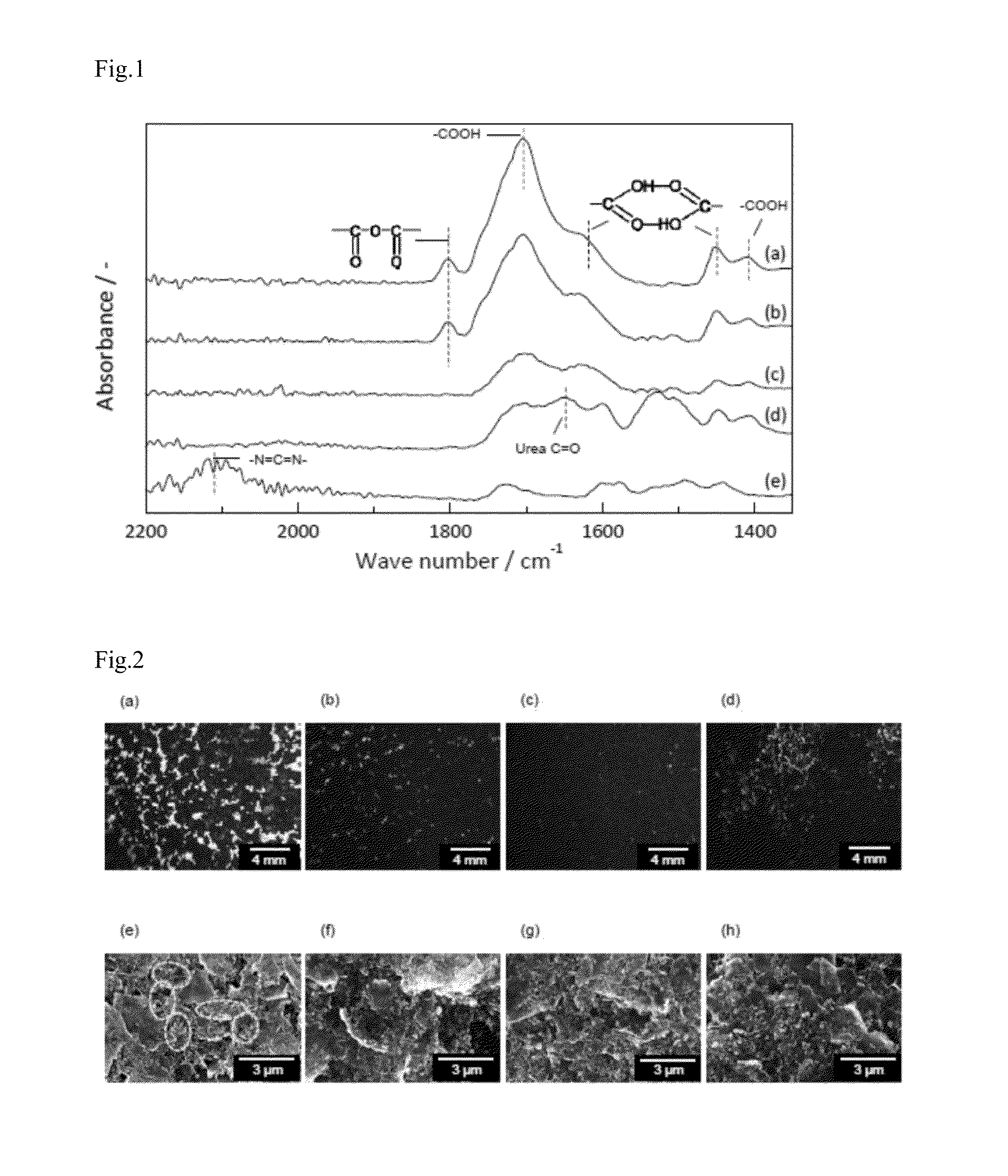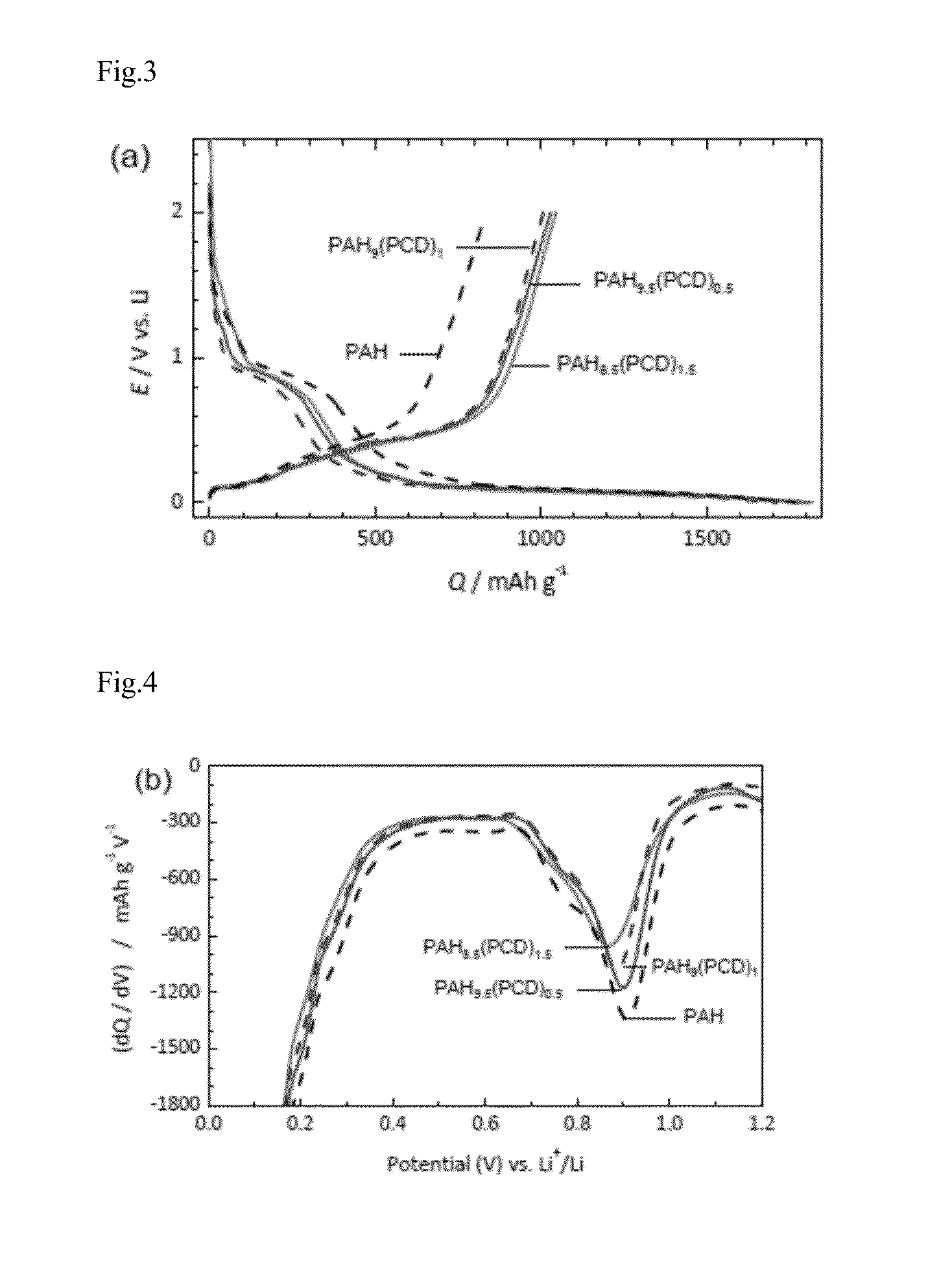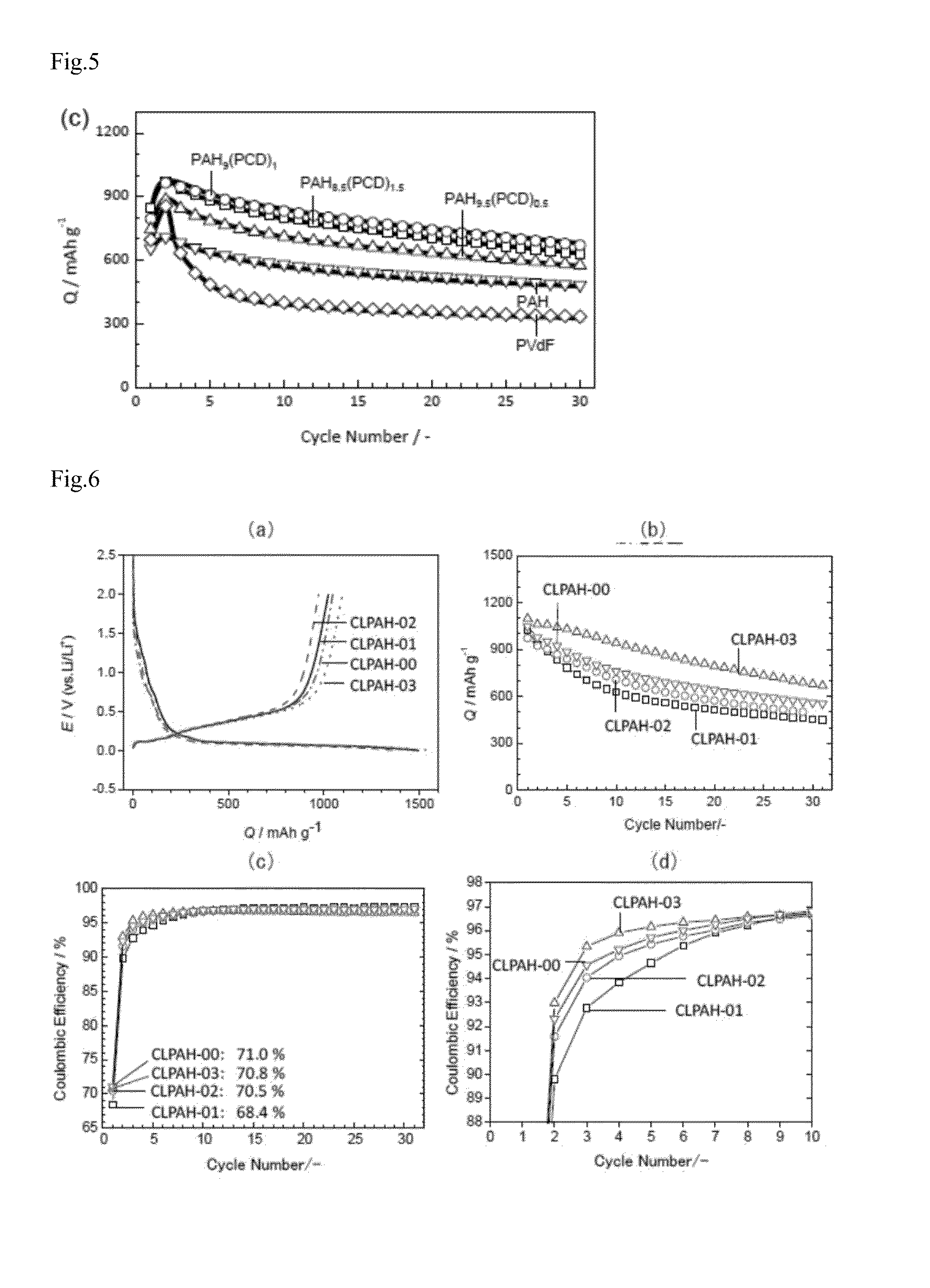Binder for lithium cell, composition for producing electrode, and electrode
a lithium cell and binder technology, applied in the direction of conductive materials, non-conductive materials with dispersed conductive materials, electrical apparatuses, etc., can solve the problems of large volume change (up to 3 times or more) on charge-discharge, electrode destruction, and known problems, to achieve the effect of high capacity retention rate, high coulombic efficiency and high capacity retention ra
- Summary
- Abstract
- Description
- Claims
- Application Information
AI Technical Summary
Benefits of technology
Problems solved by technology
Method used
Image
Examples
example 1
Producing of Cell Using the Electrode of the Present Invention
[0118](1) Synthesis of Polycarbodiimide (PCD)
[0119]PCD was synthesized according to the method described in the paper of J. Appl. Polym. Sci., 21, 1999 (1977). That is, a mixture of 5.00 g of tolylene-2,4-diisocyanate (28 mmol; produced by Tokyo Chemical Industry Co., Ltd.) and 50 mg of 3-methyl-1-phenyl-3-phospholene-1-oxide (produced by Tokyo Chemical Industry Co., Ltd.) (1.0% by mol to tolylene-2,4-diisocyanate) was refluxed in 20 mL of tetrahydrofuran (THF) under nitrogen for 2 hours at 80° C., and was subsequently filtered to remove indissolvable gel. The filtrate was dried under reduced pressure to remove the solvent. White powder obtained in this way was purified as below: (i) dissolving completely the powder into minimum amount of THF, (ii) pouring the THF solution into 1000 ml of hexane to precipitate a polymer, and (iii) filtering the polymer, picking it up and drying it under reduced pressure. After repeating t...
experiment example 1
Measurement of Characteristics of Various Binders Using Attenuated Total Reflection-Fourier Transform Infrared Spectrometer (NICOLET6700 for ATR-FTIR, Produced by Thermo Scientific KK.)
[0125]In order to examine a reaction between PAH and PCD, PAH and PCD were mixed in NMP at room temperature for 20 minutes, so as to attain the predetermined concentration [(a) PAH 10 wt %, PCD 0 wt %, (b) PAH 9.5 wt %, PCD 0.5 wt %, (c) PAH 9.0 wt %, PCD 1.0 wt %, and (d) PAH 5 wt %, PCD 5 wt %] (without using electrode materials such as the active material, the conductive assistant). Next, the NMP solution was cast on micro slide glass, dried similarly as in Example 1 (3) to prepare a cast film bound with a binder.
[0126]On the obtained 4 kinds of cast films (a) to (d), ATR-FTIR spectra were measured. Results thereof are described in FIG. 1. In addition, as comparison, ATR-FTIR spectrum of PCD powder is described in FIG. 1 as (e). The horizontal axis of FIG. 1 represents wave number and the vertical ...
experiment example 2
Various Performance Tests
(1) Measurement of 90 Degree Peeling Strength
[0129]On electrodes having PCD content of 1.0% by weight among electrodes obtained in Example 1 (3), and the electrode obtained in Comparative Example 1, a 90 degree peeling test was performed using a single column-type tensile-compression testing machine (STA-1150, produced by A&D Co., Ltd.).
[0130]As the result, peeling strength of the electrode having 1.0% by weight of PCD was 0.32 Ncm−1, and peeling strength of the electrode composed of polyacrylic acid was 0.04 Ncm−1, respectively.
[0131]That is, it was found that by cross-linking a polymer by the addition of PCD, peeling strength enhances largely.
[0132]In addition, it was also clarified that peeling strength of the electrode having 1.0% by weight of PCD is equal to or higher than peeling of the electrode.
(2) Comparison Between Image of an Optical Microscope and that of a Scanning Electron Microscope
[0133]Three kinds of electrodes obtained in Example 1 (3) and ...
PUM
| Property | Measurement | Unit |
|---|---|---|
| size | aaaaa | aaaaa |
| viscosity | aaaaa | aaaaa |
| concentration | aaaaa | aaaaa |
Abstract
Description
Claims
Application Information
 Login to View More
Login to View More - R&D
- Intellectual Property
- Life Sciences
- Materials
- Tech Scout
- Unparalleled Data Quality
- Higher Quality Content
- 60% Fewer Hallucinations
Browse by: Latest US Patents, China's latest patents, Technical Efficacy Thesaurus, Application Domain, Technology Topic, Popular Technical Reports.
© 2025 PatSnap. All rights reserved.Legal|Privacy policy|Modern Slavery Act Transparency Statement|Sitemap|About US| Contact US: help@patsnap.com



